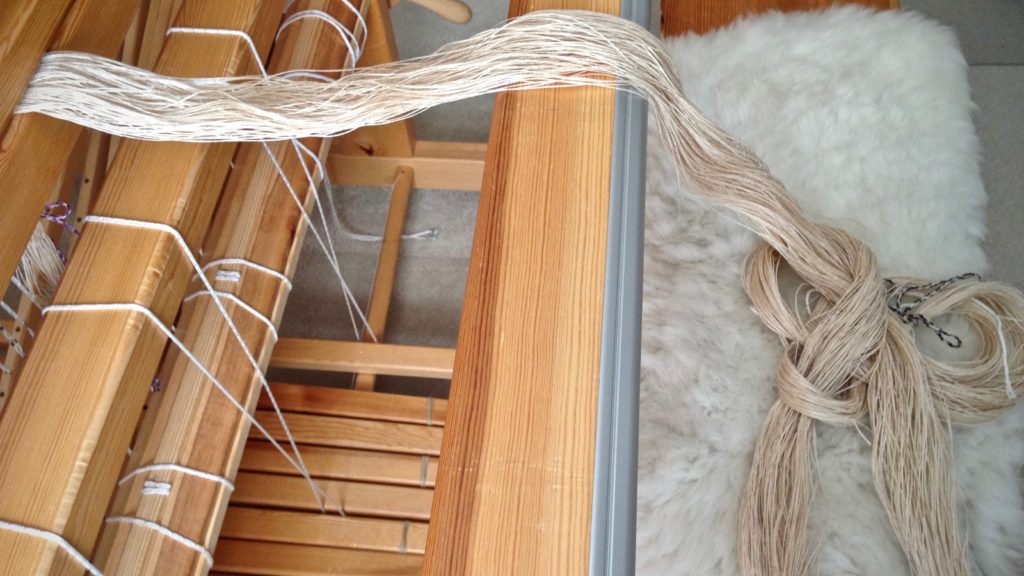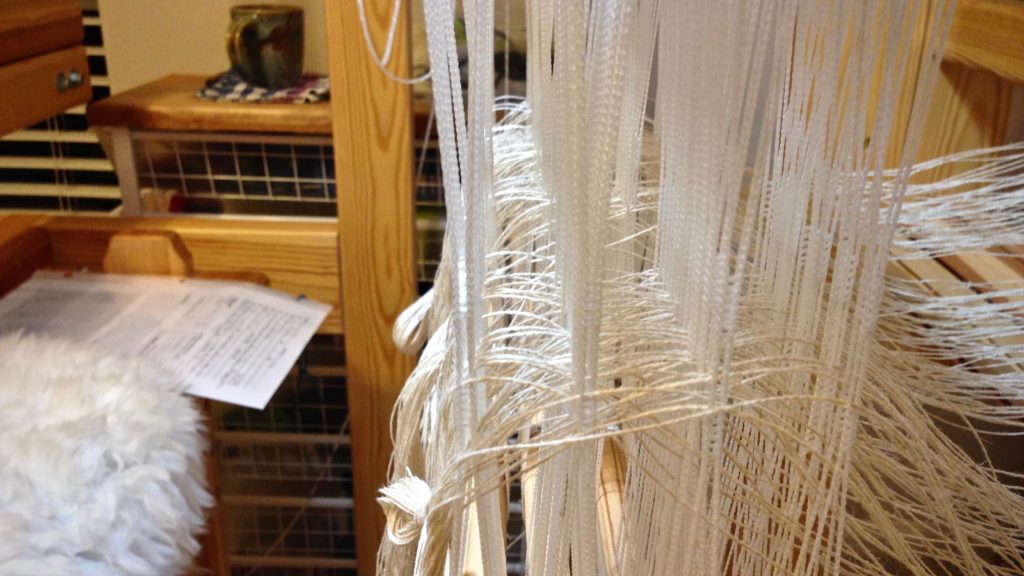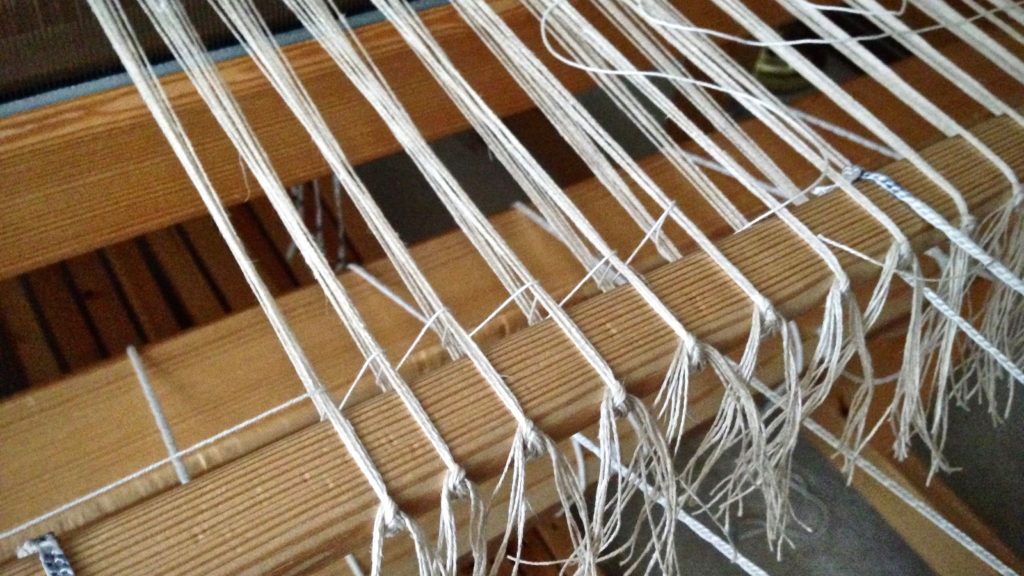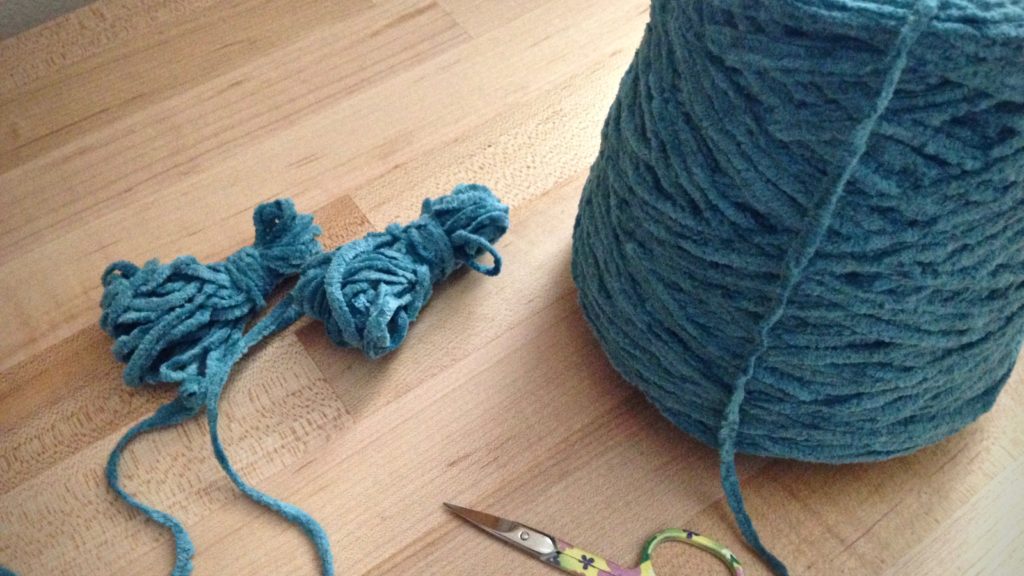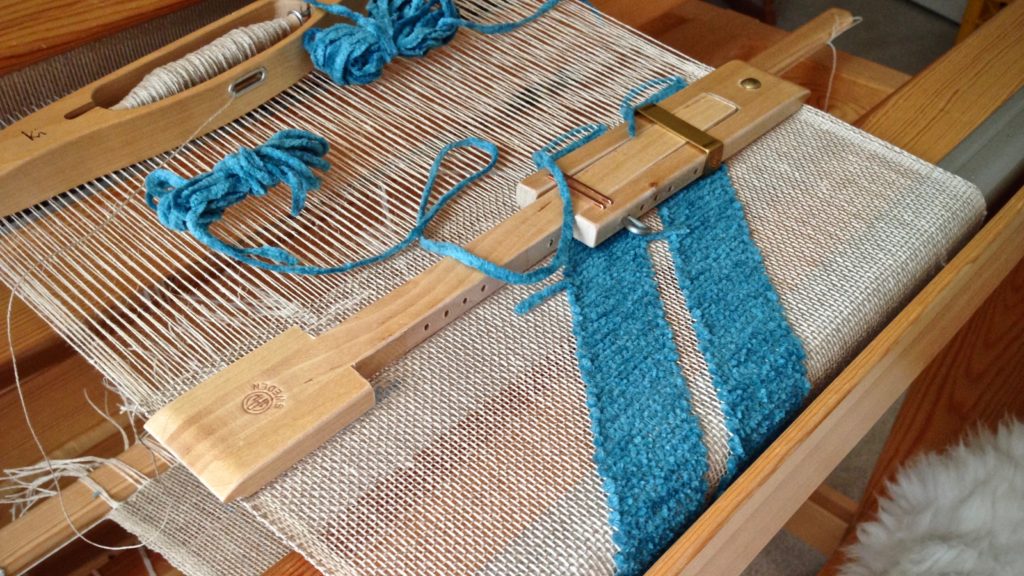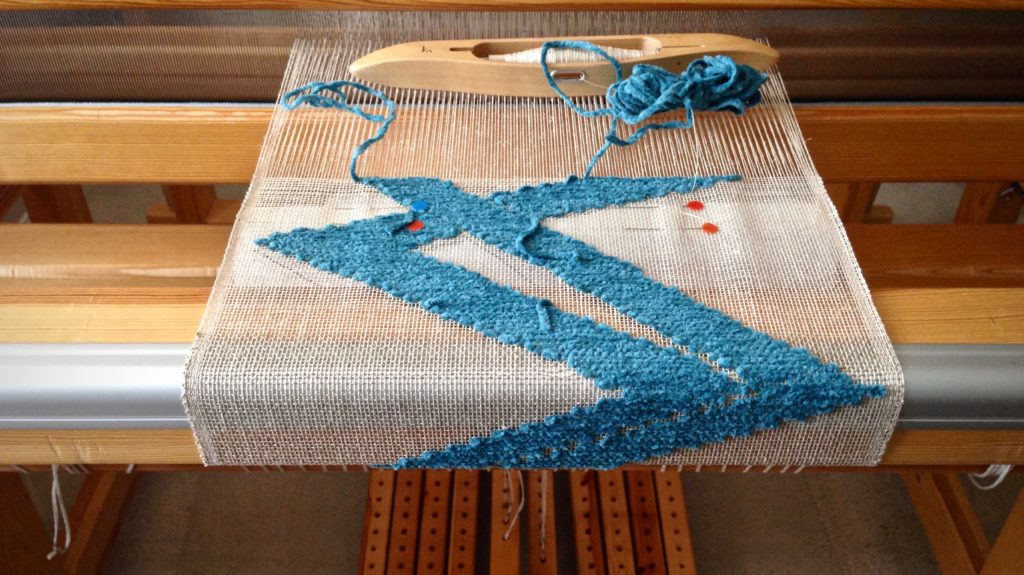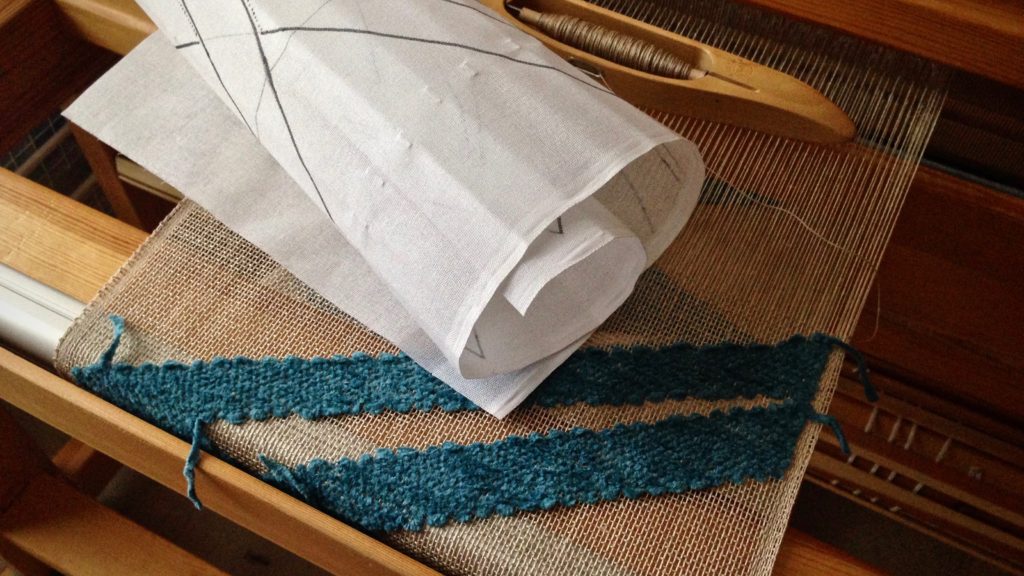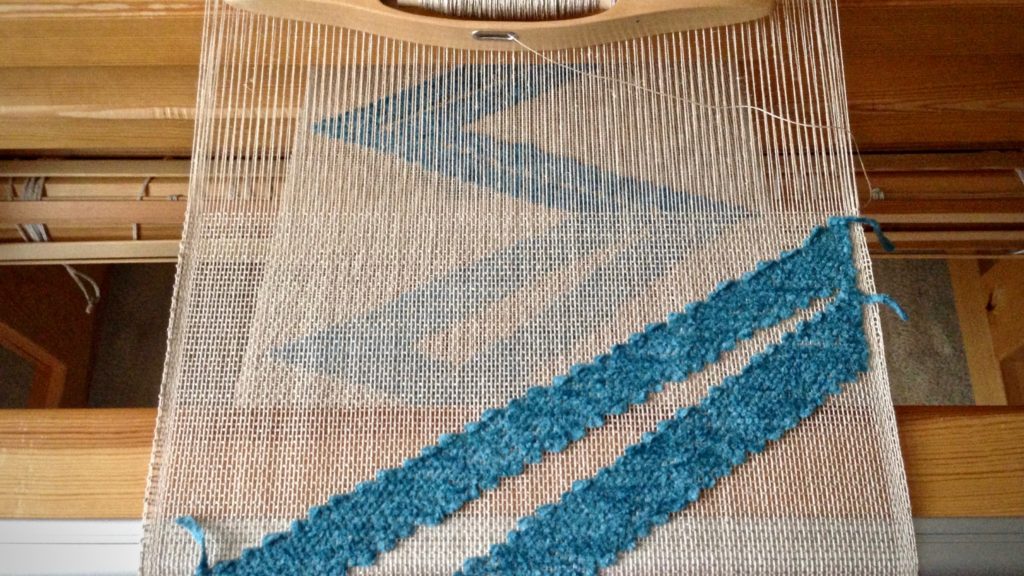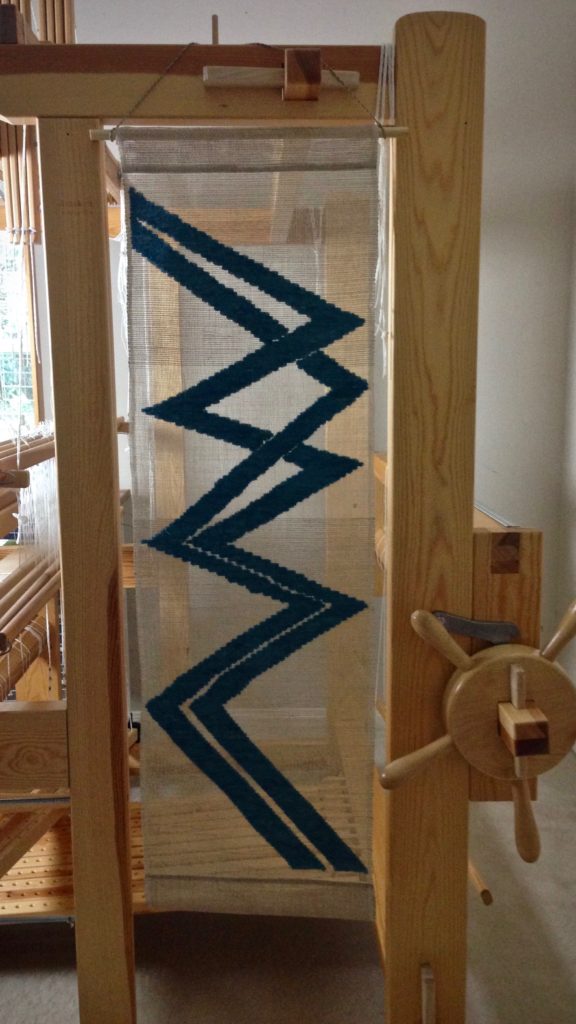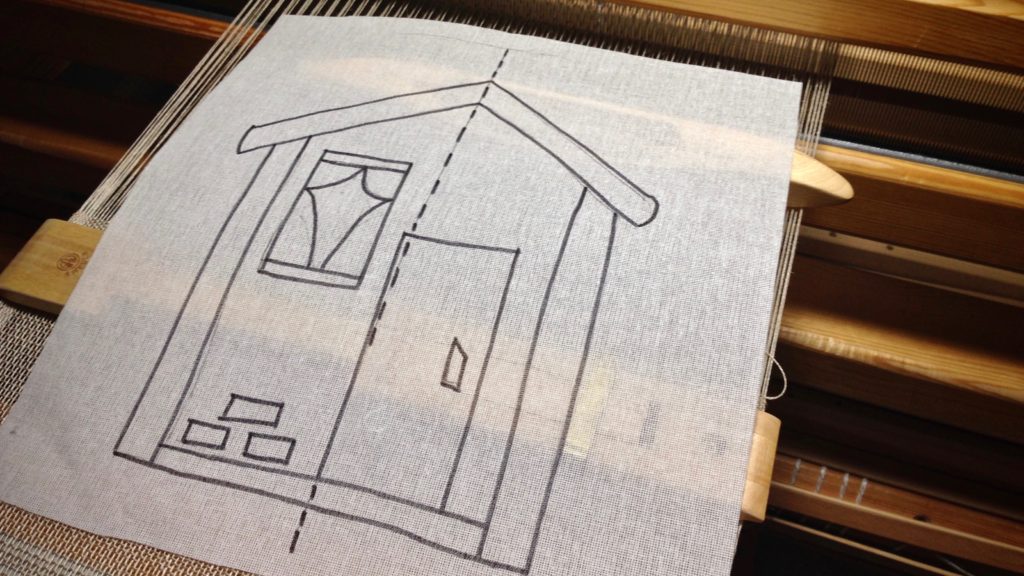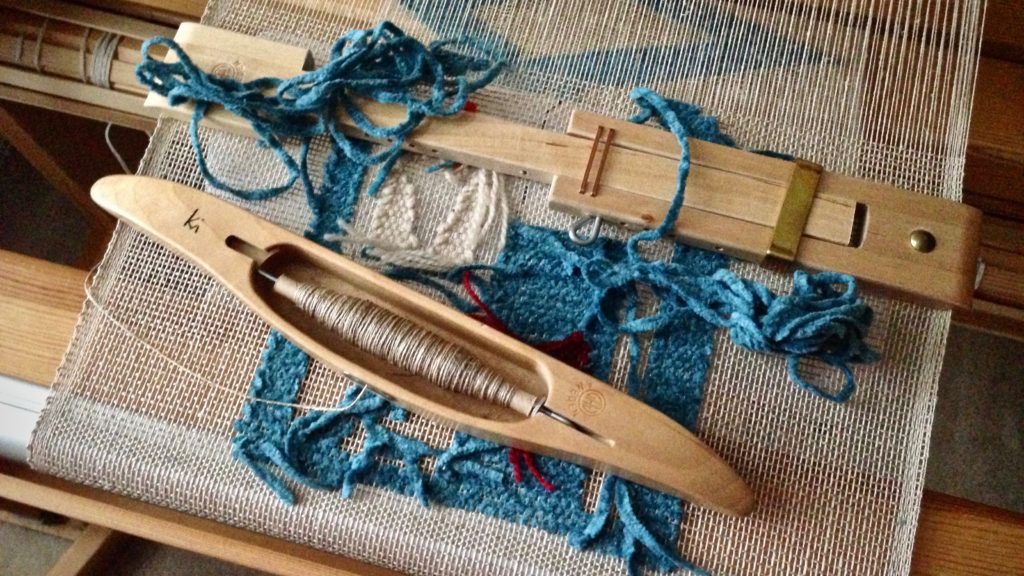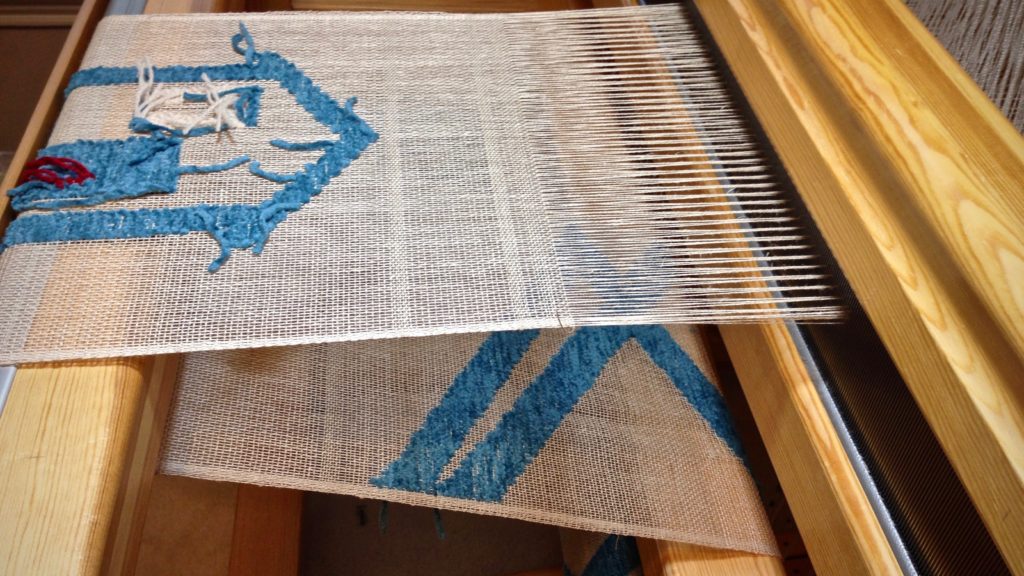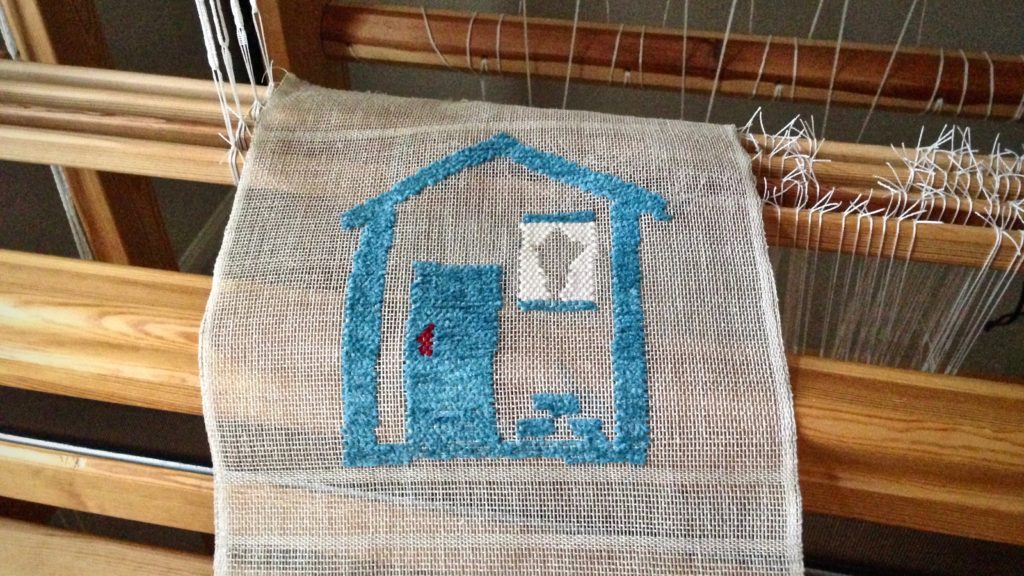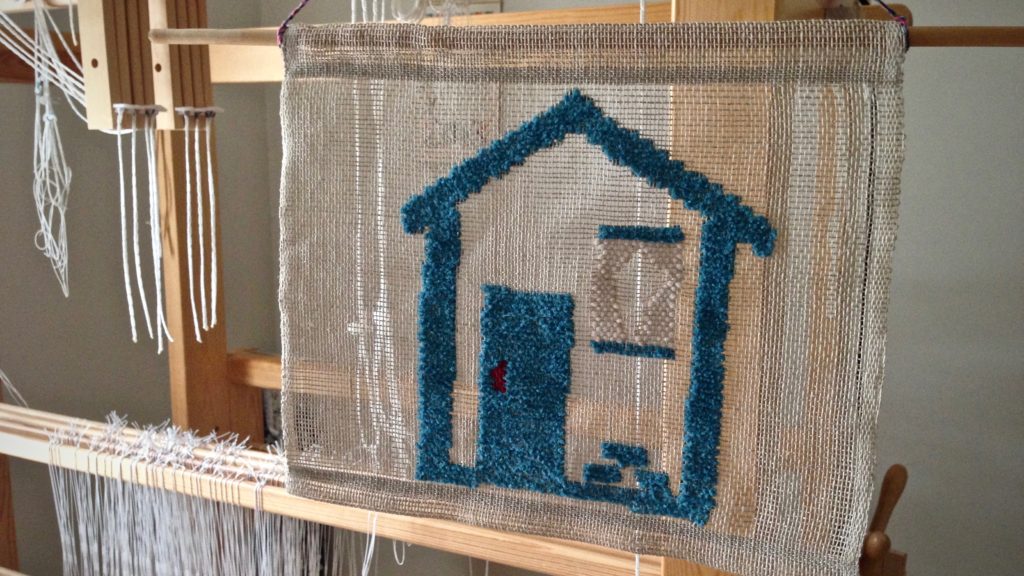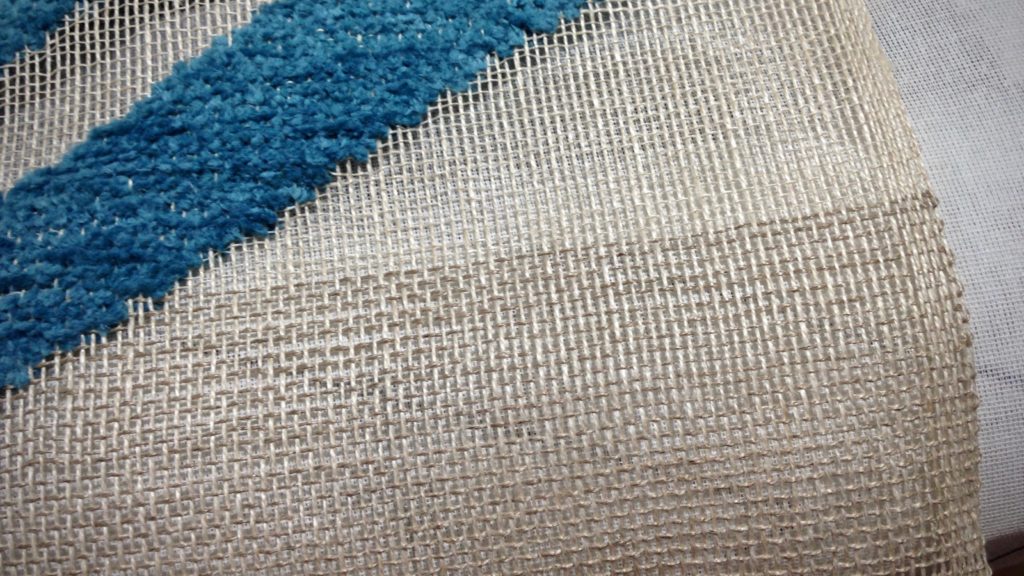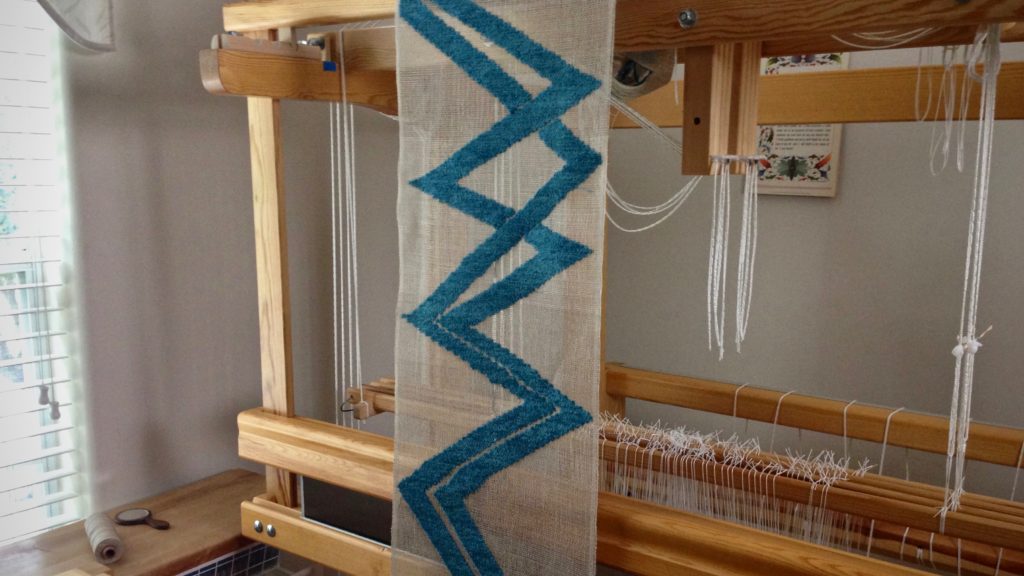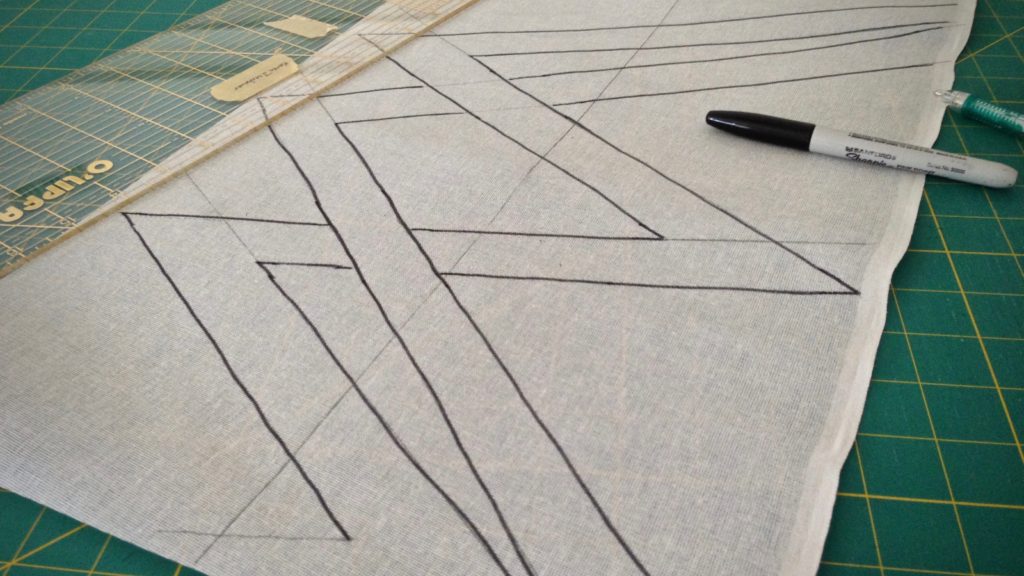Do you ever go out on a limb? I’ve been known to play it safe. But not today! My excitement for weaving this kuvikas structure was severely dampened when I saw that the pattern in the cloth was not the pattern I intended. What happened? I had switched the threading for shafts 1 and 2! Consistently, too–all the way across the warp.

I could leave the threading as is. No one would know. Oh, the arguments I had with myself at this point. “Take it out, and re-thread.” “You’d be crazy to take it out and re-thread.” The crazy self won. (I did find myself asking, “What solution would Becky Ashenden, the weaving solution genius, come up with?”) Here is the stupendous thing: I was able to correct the pattern by doing shaft-bar gymnastics. And no re-threading! What?! (I documented the process and will bring it to you in my Quiet Friday post at the end of the month.)

There are times when we are called to go out on a limb. It’s the right thing to do. But the prospect is overwhelming. We ask, “Who? Me?” And “How, Lord?” Trust the Lord, one step at a time. He will be with you. Marvelous things will happen, catching even you by surprise.
May you know when to go out on a limb.
Happy,
Karen




